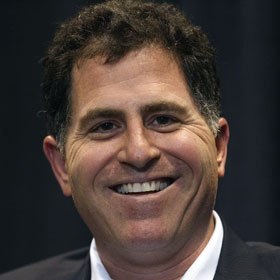HP’s Hardware Exit Could Give Dell A Boost

HP’s decision to dump webOS and spin off its PC business presents a major opportunity for Dell, says the company’s CEO Michael Dell
Continued from page 2
Dell is also in the emerging device businesses, with its Windows- and Android-based Streak tablets and Venue smartphones — another business HP is dropping. The holes in those markets formerly occupied by HP are creating a great opportunity for Dell to step right in and improve its sales in North America.
 Dell sells most of its portable connected devices in the Far East and has quite a way to go to catch up to Apple and Samsung, the two world market leaders.
Dell sells most of its portable connected devices in the Far East and has quite a way to go to catch up to Apple and Samsung, the two world market leaders.
Those prospects — together with new business opening up in the cloud services and infrastructure markets — indicate that things are looking up for Dell.
“Last quarter, we had $1 billion in new [service contract] signings, which is a record for the company,” Dell said, “and we have $15 billion or $16 billion in deferred services revenue. If you compare that to about three years ago, the number was about $5.5 billion. We’ve almost tripled the forward calendar of services activity. It’s a substantial business.”
New Moves Into Cloud Services
Dell made major cloud-related announcements at both VMworld 2011 in Las Vegas and Dreamforce in San Francisco. On 29 August at VMworld, the company revealed that it will launch its first public cloud offering later this year as part of its partnership with VMware.
Dell will host VMware’s new vCloud public cloud systems in Dell data centers: One is already online in Plano, Texas, and the other is under construction in the Pacific Northwest. More data centres are being planned.
“This partnership also will build private clouds for customers,” said Mark Bilger, vice president and CTO of Dell Services. “By extension between the two, Dell Services will be providing hyper-cloud solutions between the private cloud data centres and Dell’s public cloud offering.”
So Dell and VMware are connecting a lot of dots: customers to the cloud, data centres to data centres, and data centres to outside public cloud services. There is no question that this is a full cloud-service offering with many options for customers to consider.
This will be a multitenant environment for running virtual systems. It will provide access to virtual CPUs, memory, storage networks, IP addresses, firewalls and catalog capabilities.
Despite its successes, Dell isn’t all the way back to where some industry analysts think it should be. The stock price has been hovering in the $15 range for about two years; in late 2007, it was double that price.
In 2009, during the height of the US macroeconomic crisis, the company saw its revenues drop 16 percent in one quarter and was forced to cut expenses back by $3 billion and lay off about 2,000 workers in the PC division. Dell’s most recent quarterly earnings report (Q2 2011) came in under Wall Street expectations and showed only modest gains, with revenue up a mere 1 percent over last year, totaling $15.66 billion.
So it behooves Dell & Co. to make good on all of its markets — especially those being vacated by a large competitor such as HP.
Continued on page 4